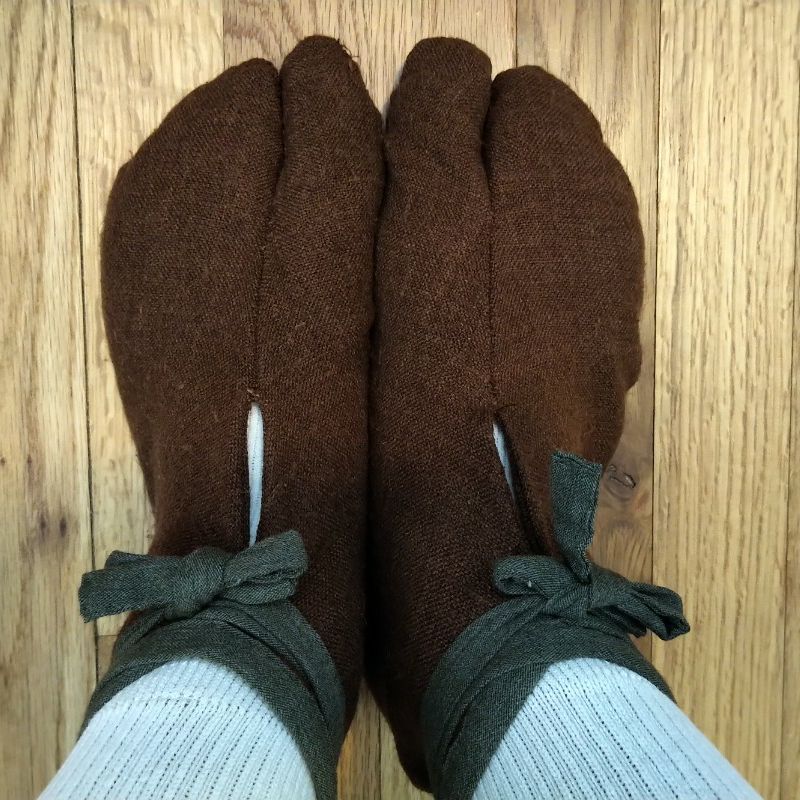One of our friends in the SCA, Oribe Tsukime, received a writ for elevation to the Order of the Laurel. The writ was issued back in the Spring, but she was not able to have her actual elevation until this past weekend. This gave me plenty of time to make these white silk tabi for her to wear as part of her elevation garb.

This was the first time I had ever made tabi for another person, the first time I had made tabi in a few years, and the process was complicated by Tsukime living somewhat far from my home. Footwear is always difficult to fit, and trying to do it by sending prototypes back and forth in the mail took a few months.
I was able to complete this project with days to spare, however, and she wore them during her vigil and elevation ceremony. They are all fine silk left over from the uenohakama project, sewn by hand with white silk thread. I don’t know how long they will last, and they probably never can be washed, but I was asked to make them and they were ready in time, so I am happy.



